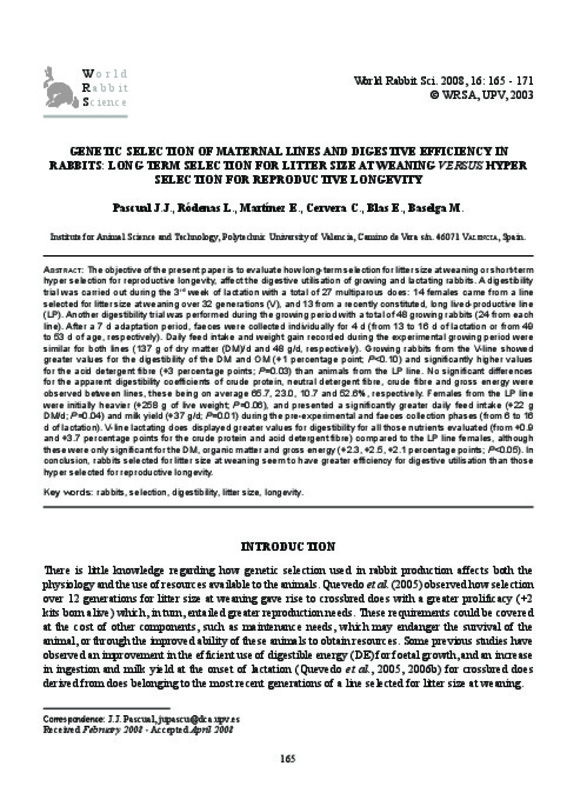JavaScript is disabled for your browser. Some features of this site may not work without it.
Buscar en RiuNet
Listar
Mi cuenta
Estadísticas
Ayuda RiuNet
Admin. UPV
Genetic selection of maternal lines and digestive efficiency in rabbits: long term selection for litter size at weaning versus hyper selection for reproductive longevity
Mostrar el registro completo del ítem
Pascual Amorós, JJ.; Ródenas, L.; Martínez, E.; Cervera, C.; Blas, E.; Baselga, M. (2008). Genetic selection of maternal lines and digestive efficiency in rabbits: long term selection for litter size at weaning versus hyper selection for reproductive longevity. World Rabbit Science. 16(3). https://doi.org/10.4995/wrs.2008.625
Por favor, use este identificador para citar o enlazar este ítem: http://hdl.handle.net/10251/8940
Ficheros en el ítem
Metadatos del ítem
| Título: | Genetic selection of maternal lines and digestive efficiency in rabbits: long term selection for litter size at weaning versus hyper selection for reproductive longevity | |
| Autor: | Ródenas, L. Martínez, E. Cervera, C. Blas, E. Baselga, M. | |
| Entidad UPV: |
|
|
| Fecha difusión: |
|
|
| Resumen: |
The objective of the present paper is to evaluate how long-term selection for litter size at weaning or short-term hyper selection for reproductive longevity, affect the digestive utilisation of growing and lactating ...[+]
|
|
| Palabras clave: |
|
|
| Derechos de uso: | Reserva de todos los derechos | |
| Fuente: |
|
|
| DOI: |
|
|
| Editorial: |
|
|
| Versión del editor: | https://doi.org/10.4995/wrs.2008.625 | |
| Código del Proyecto: |
|
|
| Agradecimientos: |
|
|
| Tipo: |
|









